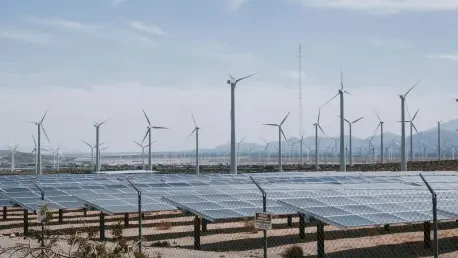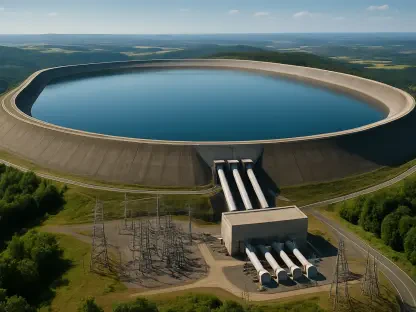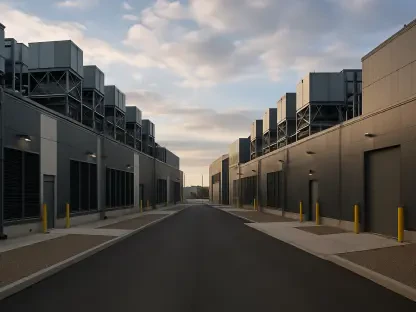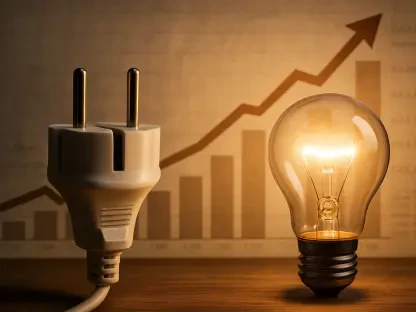In a world where energy demand is constantly evolving, staying ahead with accurate predictions and insights is crucial. Today, we’re delving into projections for U.S. power consumption with Christopher Hailstone, a seasoned expert in energy management and electricity delivery. With an intricate understanding of grid reliability and the rising role of renewables, Christopher offers a valuable perspective on what we can expect in the near future.
What factors are driving the projected increase in U.S. power consumption by 2025 and 2026?
The projected increase in U.S. power consumption is primarily driven by heightened demand from data centers focused on artificial intelligence and cryptocurrency. These centers consume a significant amount of energy due to their computational requirements. Additionally, we’re seeing a trend where both residential and commercial sectors are increasingly shifting towards electricity for heating and transportation, further boosting demand.
How do data centers dedicated to artificial intelligence and cryptocurrency contribute to rising power demand?
Data centers, particularly those servicing AI and cryptocurrency, are power-hungry. They require substantial electricity to maintain and operate high-performance computing equipment, leading to higher demand for energy. As these technologies advance and expand, the need for data processing and storage continues to climb, thereby escalating their energy requirements.
What trends in residential power consumption are expected by 2025?
By 2025, residential power consumption is expected to remain high as households integrate more electric devices and appliances. The shift from fossil fuels to electric heating solutions and the growing popularity of electric vehicles contribute significantly to this upward trend. The transition is indicative of a broader move towards a more electrically reliant lifestyle.
How does the expected power consumption for commercial customers in 2025 compare to previous years?
For commercial customers, the power consumption in 2025 is anticipated to reach new heights. This increase is attributed to businesses adopting more electricity-based operations in place of traditional fossil fuels, driven by an emphasis on sustainable practices and energy efficiency, which reflects an upward trajectory compared to previous years.
Can you explain the changes anticipated in power usage within the industrial sector by 2025?
Interestingly, while power usage in the industrial sector is set to rise, the rate of increase is not as dramatic as in other sectors. This is partly due to advancements in energy efficiency and industrial processes that have become less energy-intensive over time. However, with a stable increase in production activities, there will still be a noticeable demand for more power.
How is the share of natural gas in power generation expected to change through 2026?
The share of natural gas in power generation is projected to decrease slightly, from 42% in 2024 to about 40% in 2025 and 2026. Despite its current dominance, the gradual decline reflects a broader energy diversification, with renewables gaining more ground in the power generation mix.
What are the projected trends for coal’s share in power generation up to 2026?
Coal’s share is expected to experience some fluctuations. After a minor increase to 17% in 2025, it is projected to decrease to 15% in 2026. This cycle reflects the transitioning energy landscape where coal is being increasingly replaced by cleaner alternatives.
How will renewable energy’s share of power generation evolve by 2026?
Renewable energy is on a steady incline with its share in power generation expected to rise from 23% in 2024 to 26% by 2026. This upward trend is fueled by technological advancements, cost reductions, and policy support aimed at promoting sustainable energy sources.
Why is nuclear power’s share of the mix expected to decline over the next few years?
The anticipated decline in nuclear power’s share, falling from 19% in 2024 to 18% in subsequent years, can be attributed to the aging infrastructure and competitive pressures from the increasing affordability of renewables. The high cost of building new nuclear plants and decommissioning old ones also plays a significant role.
What are the anticipated trends for natural gas sales to residential customers by 2025?
Sales of natural gas to residential customers are expected to show a modest increase as homes continue to rely on gas for heating, despite the gradual shift towards electric solutions. The growth isn’t as pronounced as in electricity, highlighting the ongoing transition in energy consumption habits.
What changes are expected in natural gas consumption for commercial customers over the next few years?
For commercial customers, natural gas consumption is slightly growing. Although more businesses are exploring electricity for sustainability, natural gas remains an essential component for sectors where it’s difficult to electrify operations completely.
How do the EIA’s projections affect the natural gas sales for industrial customers?
Industrial consumption is expected to touch 23.5 billion cubic feet per day by 2025, higher than previous years but still below historical peaks. This slight increase is in line with industrial growth yet balanced by efforts to enhance efficiency and reduce emissions.
What predictions are made for natural gas consumption specifically in power generation by 2025?
Natural gas consumption for power generation is projected to decline slightly, reflecting the broader shift toward renewables and efforts to decarbonize electricity supply. This decline in demand underlines the push for a more sustainable energy mix.
How do these predictions compare to historical all-time highs for natural gas sales and consumption?
While we see increases in certain areas, overall consumption levels in many aspects remain under historical peaks, suggesting a careful balancing act between maintaining supply and integrating more sustainable practices. The saturation from past highs highlights the challenges and opportunities in reshaping energy landscapes.
Can you discuss the potential implications of these shifts in energy sources for the U.S. power grid?
The transition in energy sources could lead to a more resilient and sustainable power grid, yet it also poses challenges. Integrating renewables demands substantial upgrades in grid infrastructure to manage intermittent supply and ensure reliability. Enhancing grid security and flexibility will be crucial as different power sources are brought online.
How might increasing use of electricity for heat and transportation impact overall power demand?
Increased electrification of heat and transport is likely to drive overall demand significantly higher. As electric vehicles and heating solutions continue to penetrate the market, they will demand substantial power, requiring careful planning and grid upgrades to meet the peaks efficiently.
What role do you see technology playing in shaping future energy consumption patterns?
Technology plays a pivotal role not only in streamlining energy production and consumption but also in enabling smart grids and efficient energy management systems. Innovations can significantly reduce wastage and optimize utilization, making it possible to meet rising demands sustainably. The continued evolution of technology will be central to balancing energy needs with environmental goals.
Do you have any advice for our readers?
Stay informed about energy transitions and consider how they can affect personal energy choices, such as investing in renewable technologies or energy-efficient practices at home and work. Engaging with the broader energy conversation is becoming increasingly important as these shifts will touch all facets of life—directly or indirectly.









